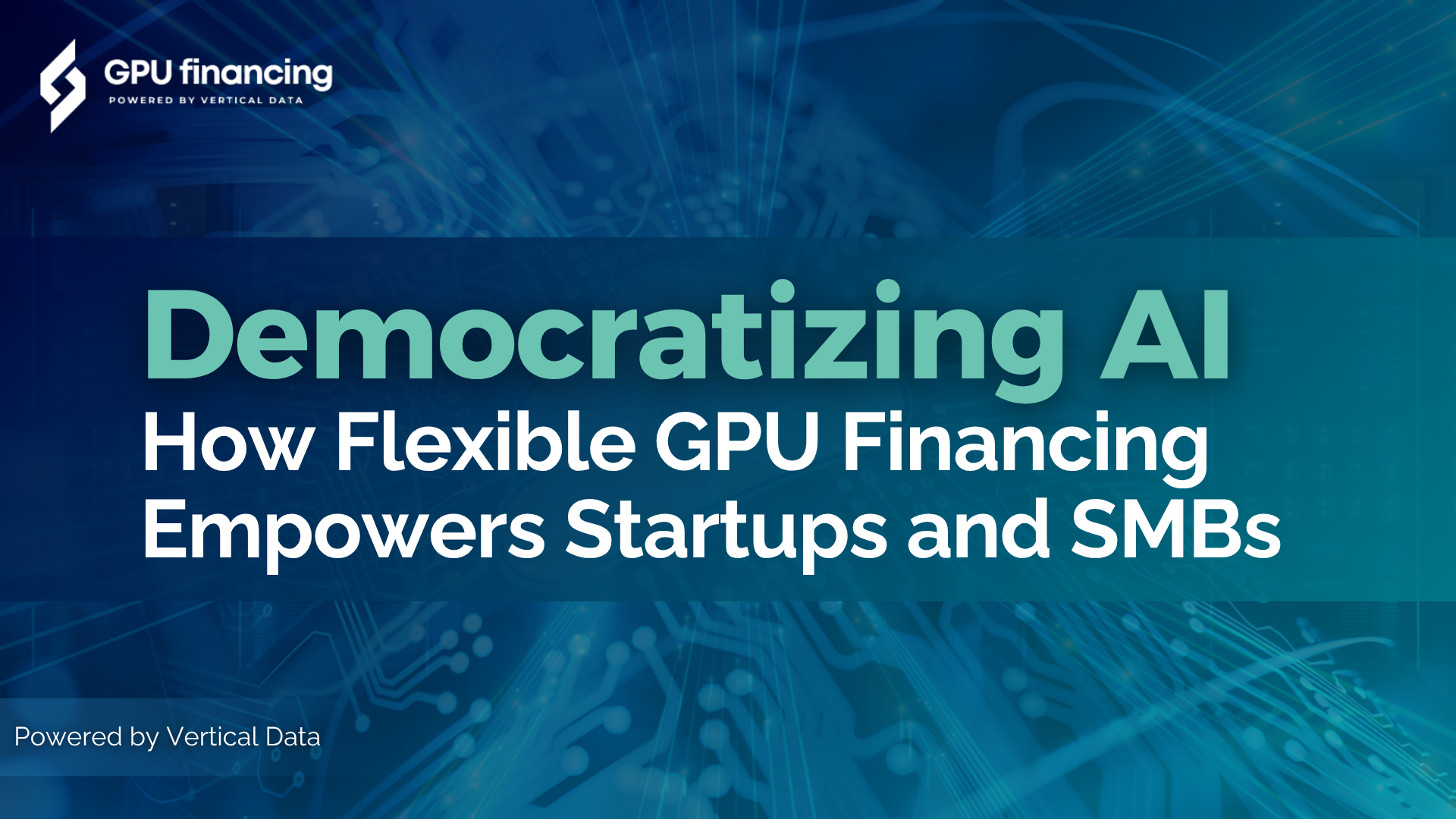Introduction
Artificial intelligence is no longer the exclusive domain of tech giants. From automating business processes to unlocking new product innovations, AI offers transformative potential for companies of all sizes. However, the high cost of the specialized hardware required to power these ambitions has created a significant barrier to entry. Startups and small to medium-sized businesses (SMBs) often find themselves at a competitive disadvantage, unable to afford the powerful GPU infrastructure that large enterprises deploy. This article explores how flexible GPU financing is democratizing AI, leveling the playing field and empowering a new wave of innovators.
The Great Divide: The AI Hardware Gap
The engine of modern AI is the Graphics Processing Unit (GPU). These powerful processors are essential for training and running complex machine learning models, but they come with a prohibitive price tag. A single high-end data center GPU can cost tens of thousands of dollars, and building a competitive AI development cluster can quickly run into the hundreds of thousands or even millions. For startups and SMBs operating with tight budgets, this level of upfront investment is often not feasible.
This creates a significant AI hardware gap. While large corporations can invest billions in their AI infrastructure, smaller players are often left with a difficult choice: make do with underpowered hardware that limits their ambitions, or forgo AI development altogether. This disparity stifles innovation and concentrates the power of AI in the hands of a few. Recent market data underscores the challenge: while nearly half of all small businesses plan to adopt AI, many are held back by high costs and a lack of access to the necessary infrastructure.
Bridging the Gap: The Power of Flexible Financing
Flexible GPU financing offers a powerful solution to this challenge, effectively bridging the AI hardware gap for startups and SMBs. By shifting the acquisition of GPUs from a massive upfront capital expenditure (CapEx) to a predictable operational expense (OpEx), financing democratizes access to the essential tools of AI innovation.
How GPU Financing Empowers Startups and SMBs:
- Preservation of Capital: For a startup, cash is king. Tying up precious capital in rapidly depreciating hardware is a risky proposition. GPU financing allows these companies to preserve their cash for other critical business needs, such as hiring talent, marketing products, and funding R&D. Instead of a massive upfront outlay, they can make predictable monthly payments that align with their revenue streams.
- Access to Cutting-Edge Technology: The AI hardware landscape evolves at a breakneck pace. A GPU that is state-of-the-art today may be obsolete in 18 to 24 months. Financing models like Fair Market Value (FMV) leases allow startups to access the latest technology without the long-term burden of ownership. At the end of the lease term, they can simply return the old hardware and upgrade to the newest generation, ensuring they always have a competitive edge.
- Scalability on Demand: A startup’s infrastructure needs can change rapidly. They may need to scale up their GPU cluster to train a new model or scale down during a period of lower activity. Financing provides the flexibility to adjust their hardware footprint as their business evolves. This pay-as-you-go approach avoids the problem of being locked into a fixed hardware configuration that no longer meets their needs.
- Leveling the Competitive Playing Field: Ultimately, flexible financing is about more than just managing costs; it’s about enabling competition. When startups and SMBs can access the same powerful GPU infrastructure as their larger counterparts, they can compete on the merits of their ideas and the talent of their teams. This fosters a more dynamic and innovative AI ecosystem.
A New Paradigm for AI Innovation
The democratization of AI is not just a feel-good story; it is a critical driver of economic growth and technological progress. When a broader range of companies can participate in the AI transformation, it leads to more diverse applications, more creative solutions, and a more resilient and competitive market. Flexible GPU financing is a key enabler of this new paradigm, providing the financial tools necessary to unlock the innovative potential of startups and SMBs around the world.
Conclusion
The promise of artificial intelligence should not be limited by the size of a company’s balance sheet. The high cost of GPU hardware has created a significant barrier to entry, but flexible financing models are breaking down that barrier. By providing startups and SMBs with access to the cutting-edge tools they need to innovate, GPU financing is leveling the playing field and democratizing AI. As we look to the future, it is clear that the companies that will drive the next wave of AI innovation will be those that are empowered to compete, regardless of their size.

